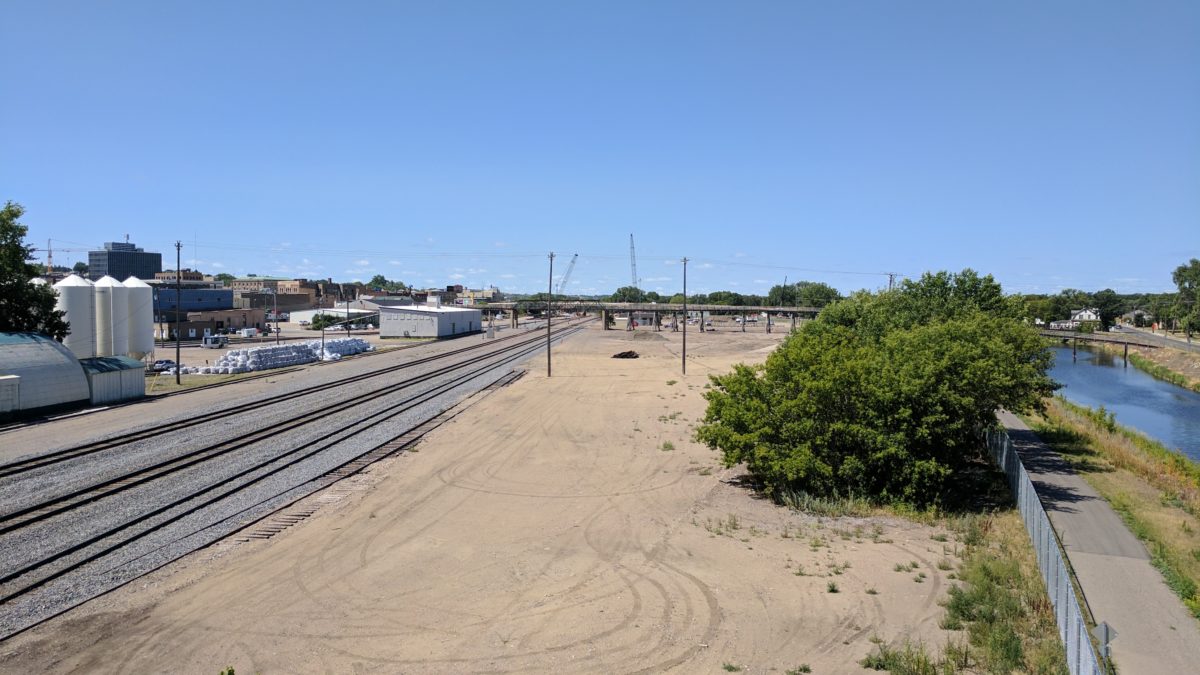One of the reasons The Minot Voice focuses on news from other areas is because it’s rare that a community like Minot confronts a wholly new and unique problem. Whatever our challenge, and we have plenty, there are good odds that some community somewhere has faced a similar challenge. And the more we read around, the more likely we are to find outside ideas and solutions that match with local challenges.
That’s exactly why this commentary from Winnipeg is so striking. If we simply remove the word ‘Winnipeg’ and replace it with ‘Minot’, we could learn an important point or two and probably save ourselves some decades. The following was written by Winnipeg Attorney Charles Huband and originally published in The Winnipeg Free Press. It is reprinted here with permission from Mr. Huband.
Major projects take time to develop to fruition. The plan to provide flood protection for the metropolitan area of Winnipeg began in the aftermath of the flood of 1950. It took the better part of three decades to build the Floodway, a.k.a. “Duff’s Ditch,” the Portage Diversion and the Shellmouth Dam, all of which are components in the protection plan.
The development of The Forks, from the removal of the rail yards to the establishment of the Canadian Museum for Human Rights, did not happen overnight.
So, we should not be surprised that it may take several years to determine the future of the Hudson Bay store at the heart of city. And it will probably take decades to move the Canadian Pacific Railway (CPR) out of its rail yards so that other unknown uses can inherit that space.
But if these and other major developments are ever to occur, a start must be made. The future of Winnipeg becoming one of the outstanding metropolitan areas in North America is at stake. The political leaders of today have the responsibility to move us forward. In large measure, the initiative rests with city councillors and members of the legislature — yes, even those members who do not represent Winnipeg constituencies. And, of course, no major project is possible absent plentiful funding from the government of Canada.
The rail relocation of the CPR yards implicates the federal government because relocation requires approval of the plan under the terms of the Railway Act.
But preliminary steps can be and have already been taken. CentrePort Canada was created and is located in northwest Winnipeg just beyond the Richardson International Airport. It is intended to make Winnipeg a hub of North American commerce. Major trucking firms have elected to make CentrePort the focus of their business. The area is serviced by both the CPR and the Canadian National Railway Company (CNR), and air cargo is next door. Space has been set aside for a rail yard, but it may not be fully developed until the CPR yards are moved from the inner city to the northwest outskirts.
But there are other equally pressing reasons to move the rail yards. It would clear the way for a rapid transit route toward the northwest of the city. It would open significant space for opportunities for establishing new commercial, residential and recreational developments serving the needs of residents on both sides of the existing rail yards. It would largely eliminate that source of division between those who currently reside north of the rail yard, and the rest of the Winnipeg community.
One of the reasons for rail yards relocation is that railways no longer require such a huge space. Over the past two decades, in particular, railway companies, led by CNR, have become more efficient, and as efficiency continues to improve, the need of huge spaces for shunting rail cars diminishes. For the CPR, the space available at CentrePort may well be ample for modern needs.
When then-former premier Greg Selinger announced that Jean Charest had been retained as a first step toward rail relocation, it was a timid step in a long-term project. The fact that Premier Brian Pallister cancelled that initiative has delayed the start of the long process that lies ahead. But it is far from a fatal blow.
For one thing, the railways, and particularly the CPR, can begin the process of establishing the CentrePort property as the sensible and timely area for its future rail yards replacement. CentrePort is a likely proponent of rail relocation because without the rail yards as a component, CentrePort is sadly incomplete. It will reach its full potential only when rail transportation is added to trucking and air cargo.
I do not know whether anyone had a clear-eyed idea of what Charest was going to do with his $400,000 fee, but it clearly would not take us very far in terms of moving the project forward.
In Regina, the initiative for rail relocation came primarily from the city itself before a plan was approved by the government of Canada through the railway commissioner. It took between 50 and 60 days of hearings, dealing with everything from environmental concerns to the cost of the entire enterprise and how that might be shared between the various levels of government. Suffice to indicate that upon approval of the plan, and looking at the benefits and the deficits, the plan has not been implemented.
It is my belief that rail relocation in Winnipeg is far more likely to be implemented. A workable alternative at CentrePort is realistic for the railways, and necessary for the wider community. The land the CPR would release for future development is not expensive, but it is invaluable for future urban growth and the healing of that great scar across the face of Winnipeg.
It could easily take two decades or more from start to finish, so let us procrastinate no longer. Let a dialogue begin: the railways, CentrePort Canada, the three levels of government and the general public, particularly those who might be adversely affected by removal of the yards and those who see new opportunities. Informal discussions cost nothing, and that is the starting point. It is what happens thereafter that begins to cost money.
Charles Huband is a former judge of the Manitoba Court of Appeal and a lawyer at Taylor McCaffrey LLP. He was the leader of the Manitoba Liberal party in the 1970s.



